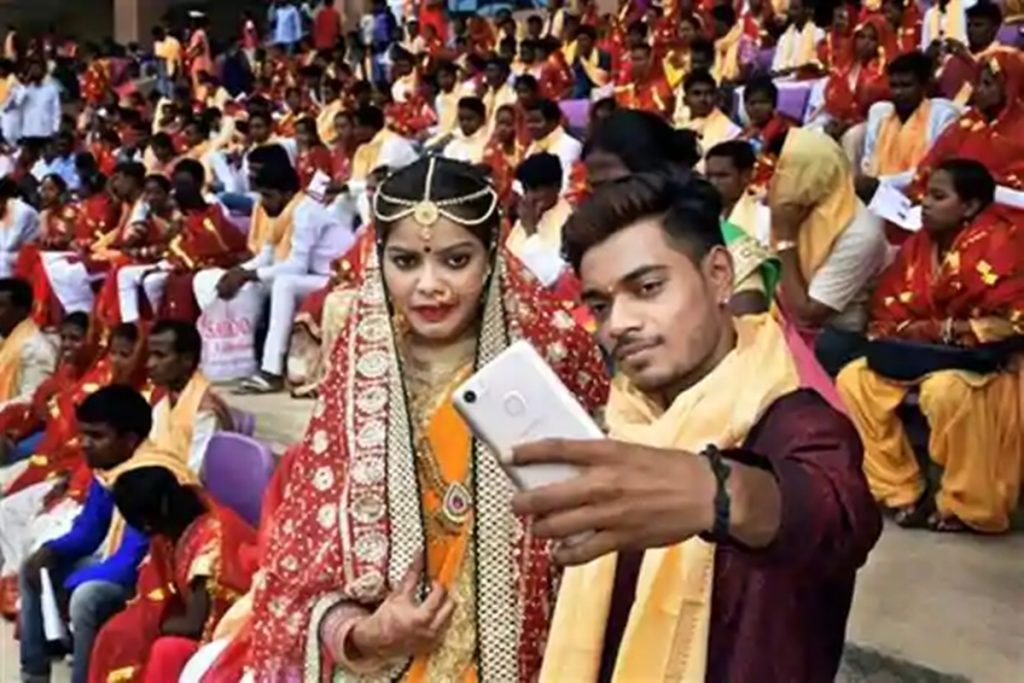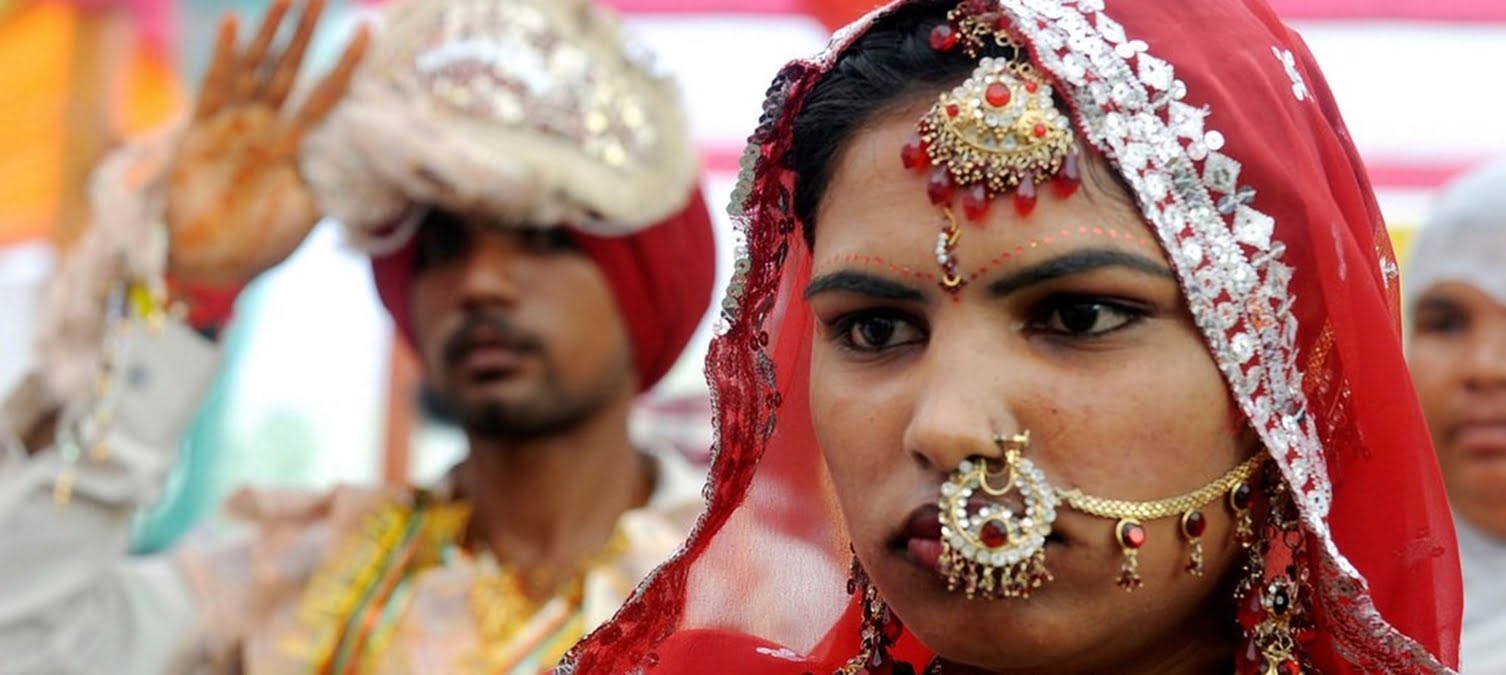In June this year, the Union Ministry for Women and Child Development under Narendra Modi-led BJP government, set up a committee which is reconsidering the legal minimum age for marriage for women from 18 to 21. As the Prime Minister announced this in this year’s Independence Day address, it was widely hailed as empowering, considering how it would equate the minimum age for marriage for men and women. However, if one was to contextualise this proposal to revise the minimum age for marriage in the history of debates on the legal ‘age of consent’ in India, alongside seeking an understanding of how ‘law’ works in the local contexts of our country, we may see a different picture.
If one was to contextualise this proposal to revise the minimum age for marriage in the history of debates on the legal ‘age of consent’ in India, alongside seeking an understanding of how ‘law’ works in the local contexts of our country, we may see a different picture.
Also read: Autonomy, Dignity & Bodily Integrity Of The Girl Child: Understanding SC’s Ruling On Age Of Consent
As most of the twentieth century witnessed the Indian nationalist struggle, followed by the new nation building process, it was also a century that saw struggles based on the minimum age for marriage or the ‘age of consent’ for women. While the discussions on these matters started in the 1850s, it was first in 1891, that the age of consent (ie. the minimum age for marriage and sexual intercourse) was raised from 10 to 12 for girls, in the Indian Penal Code. These years are often remembered as bringing progressive changes for women, along the same lines of anticipation on the PM’s announcement of establishing the committee in August. But, it must be remembered that the debates behind the ‘age of consent’ were started by certain social groups and communities, especially the Enlightenment thinkers from regions such as West Bengal which grew increasingly critical of the regressive customs embedded in the Hindu traditions, and under the influence of modern western education, sought to shatter the hold of such customs on women’s lives. Alongside the struggle for revising minimum age for marriage and sexual intercourse, debates on widow remarriage, women’s education, and ban on Sati, were also themes that were being taken up by the same groups. Often referred to as the very first feminist movements of the Indian subcontinent, it is hardly narrated to us how restricted these movements were, especially in the context of caste.
Lucy Caroll in a series of her writings on the colonial legacy and women’s rights movements mentions that the Adivasi communities, especially of the present areas of Chhattisgarh, Andhra Pradesh, Jharkhand, Madhya Pradesh etc. had no minimum age for marriage or of consent designated for women.
These movements were not only executed by caste-Hindu communities, especially in Bengal, but also affected only a handful of upper caste women, often at the behest of the Adivasi communities in various parts of the country. Lucy Caroll in a series of her writings on the colonial legacy and women’s rights movements mentions that the Adivasi communities, especially of the present areas of Chhattisgarh, Andhra Pradesh, Jharkhand, Madhya Pradesh etc. had no minimum age for marriage or of consent designated for women. Women could live in their family home for ages well above the legal limits set for Hindu women as an extra pair of laboring hands for their communities and/or tribes, just as men. Also, some communities recognised absolute sexual agency that rested with the members of their tribes, where the compulsion of sexual intercourse within the frame of legal marriage was not existent at all. Rituals, games, dances etc. that encouraged free sexual ties as a matter of building solidarity and unity across groups were inherent in some tribes, the language of which does not exist within the language of modern legal institutions that aided the making and maintenance of an independent nation-state.
Also read: No Indian Judges, Marriage Is Not The Remedy To Sexual Abuse
However, since the new nation-state, its building and establishment endorsed the dominant narratives of women’s minimum age for marriage and of consent, they were forced to percolate to regions and cultures that came (or were brought) within the ambit of the new nation-state. In 1929 once again, under the Child Marriage Restraint (Sarda) Act, the minimum age for marriage and of consent was raised to 14 for girls, and 16 for boys. Finally, in 1978, when the age was legally noted to be 18 and 21 for women and men respectively, it was declared as a step towards population control in the relatively young nation-state, which was still not ready to support its people. It was believed that a later minimum age for marriage for women would decrease chances of fertility, and overall help control population.
Today as we witness this new, seemingly progressive move by the current government, we should not forget that it is being executed within the same framework of dominant narratives of modernity, which has always been in favour of the larger goal of securing the structure and idea of a nation-state, and not for the betterment of the state of women cutting across caste and class in the country. While 18 remains an arbitrary minimum age for marriage, increasing it to 21 – even if it means to equate it with men’s minimum age for marriage – shall remain yet another arbitrary number. The general imagination produced by this proposal also hints towards better opportunities for education for women, as they will now be free of marital responsibilities till 21. But without parallely extending the age of education under the Right to Education Act (2009) to 21, this imagination will never turn into reality, for it is increasing the opportunities towards making higher education accessible for girls that could materialise the increase in the minimum age of marriage of girls into a success.
Without parallely extending the age of education under the Right to Education Act (2009) to 21, this imagination will never turn into reality, for it is increasing the opportunities towards making higher education accessible for girls that could materialise the increase in the minimum age of marriage of girls into a success.

Moreover, despite the amended legal minimum age for marriage in 1978, NFHS studies since 2005-06 has shown the prevalence of ‘illegal’ child marriage in Bihar, Jharkhand, Rajasthan and West Bengal, with the most recent survey indicating the highest number of marriages happening between 15-18 years of age in the Murshidabad district of West Bengal. It is not a matter of surprise that the legal framework based on which the state claims to act is interpreted differently in caste, regional, religious and linguistic communities across the country – to an extent that it is altogether rejected as well. The possibility of such a policy amendment remains blind to the language and issues of the people on which it shall be executed, and will therefore result in criminalising selective sections of the population in this sub-continent. On one hand where the government claims to be doing this with an aim to improve health conditions for both women and children, the idea of a better and safer life, and building relations for capital and unity is often attached to marital relations among communities, that take place as soon as the woman is legally adult. This seemingly progressive step by the current government should not be looked at in isolation, and its pros and cons must be assessed within the historical context of ‘age of consent’ debates, and the gap between the language of legality between the state and the realities of its people.
Anamika Das is currently pursuing her MPhil in Social Sciences from the Center for Studies in Social Sciences, Calcutta. She has completed her undergraduate and masters in social sciences, with a specialisation in sociology from Symbiosis School for Liberal Arts and Manipal Center for Humanities, respectively. Her current research interests include the nature of social movements, with a focus on post 2010 women’s movements on gender and sexuality in India. She enjoys food, visual arts, and watching movies. She can be found on Instagram, on her artiste account, Facebook and also be reached on adhigherstudies@gmail.com.
Featured Image Source: Scroll




